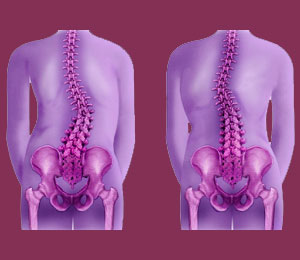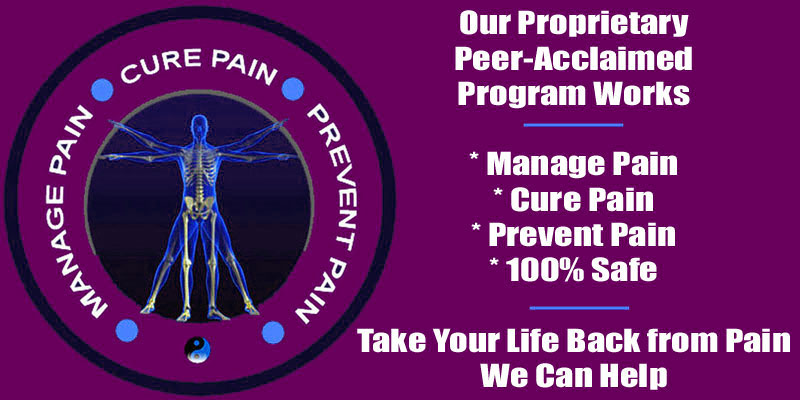
Side-to-side spinal curvature is diagnosed as scoliosis and ranges in severities, signs and possible symptoms. Although all are classified as scoliosis, side-to-side curvatures of the spine come in many different varieties and classifications, making the entire concept rather complicated from a layman’s point of view. However, with a bit of research, you can learn everything you need to know about all the different types of scoliotic curvatures and know for sure which characteristics apply to you or your child.
The human spine is not designed to be curved in the coronal plane. A typical spinal anatomy will be perfectly, or nearly perfectly, straight when viewed from the direct front or back. This fact guarantees that all manner of scoliosis conditions are considered atypical. However, we must stress that atypical structure does not predict pain or imply that there is anything at all wrong with the person expressing the structural irregularity.
This important resource section details the classification of scoliosis based on characteristics, age of onset and particular circumstances of each patient profile. If you want to know more about all the various manifestations of scoliotic curvatures in the spine, this is the perfect informational resource for your needs.
Side-to-Side Spinal Curvature Variations
No side-to-side spinal curve is normal, but no two cases are exactly alike either. This is because all scoliosis conditions are not only variable in the degree of curvature when viewed from the coronal plane, but also entail changes in lordotic and kyphotic curvature, as well as vertebral rotation, creating very unique patterns for each patient.
Scoliosis conditions range greatly and can be grouped into various parameters of classification by medical service providers. As mentioned above, one of the major diagnostic criteria is the age of onset when scoliosis occurs. Therefore, many of the classifiers are based on the stage of life when scoliosis is first discovered. Other important classifiers for scoliosis include the shape and location of the curvature in the spine, as well as the direction the curvature faces. All of these attributes can be used to classify specific examples of scoliotic side-to-side spinal curvatures.
Understanding your diagnosis, or your child’s diagnosis, can be a complex undertaking. Therefore, please check out the list beneath that details each of the diagnostic terms that might be applied to the condition under scrutiny for better comprehension of what each term actually means.
Side-to-Side Spinal Curvature Topics
Below are listed various specific types of scoliosis and diagnostic terms that are often applied to particular patient profiles. As each new essay is published, it will be added to the ever-growing list which follows:
Cervical scoliosis describes curvatures that exist wholly or mostly in the region of the neck. Cervical scoliosis is a rare profile not often seen, except in cases of specific types of traumatic injury.
Cervicothoracic scoliosis is still not as common as other varieties and exists in both the neck and the upper back regions simultaneously.
Thoracic scoliosis is very common and mainly occupies the upper and middle back region.
Thoracolumbar scoliosis is also commonly seen and exists concurrently in both the middle and lower spinal zones.
Cervicothoracolumbar scoliosis is the longest type of spinal curvature, encompassing all 3 major areas of the vertebral column.
Idiopathic scoliosis is the most common type and accounts for up to 85% of diagnosed patients, depending on the area of the world. Idiopathic scoliosis can not be linked to definitive causative mechanism.
Functional scoliosis, also commonly known as nonstructural scoliosis, is not spinally-motivated, although the curvature of the spine is indeed modified. Instead, the underlying causation can be muscular or neurologically-enacted. Non-skeletal scoliosis is often easier to resolve than spinal versions.
Fixed scoliosis, also called structural scoliosis, originates in the spine itself and is based on some structural abnormality in structure or interaction between spinal components.
Infantile scoliosis is not overly common and describes side-to-side abnormal spinal curve alteration developed between the ages of 0 and 3. Many cases resolve naturally or improve to less clinically-significant levels with the passage of time.
Juvenile scoliosis is expressed during the ages of 4 to 9 and often becomes very clinically severe, due to its early age of onset.
Adolescent scoliosis is the most common variety, accounting for the vast majority of all atypical side-to-side spinal curvatures. Age of onset ranges between 10 and 17, with most cases occurring between 12 and 14.
Adult scoliosis, also called developed scoliosis, forms in fully developed spines or in pre-adult spines due to injury or abnormal degeneration.
Neuromuscular scoliosis is caused by disease, injury or dysfunction in the muscular or neurological tissues.
C curve scoliosis represents a singular curvature in the spine that resembles the letter C.
S curve scoliosis represents two or more opposing directional curvatures in the spine that more closely resembles the letter S. This condition is also known as double scoliosis.
Scoliosis apex represents the exact middle point of the abnormally curved section of the spine.
Dextroscoliosis describes any scoliosis curvature that expresses the convex side of the curve towards the right side of the body. Meanwhile, levoscoliosis describes any scoliosis curvature that expresses the convex side of the curve towards the left side of the body.
Mesenchymal scoliosis is created by injury or disease that results in deficient stabilization of the spine via passive components.
Kyphoscoliosis describes scoliosis that also entails significant changes in thoracic kyphosis of the upper back.
Side-to-Side Spinal Curvature Synopsis
Scoliosis is a category of conditions, rather than a singular health issue. The various different rating criteria used to classify scoliosis are very diverse and therefore formulate a very complex health issue ranging from completely asymptomatic and benign to potentially fatal. As mentioned previously, no two cases of scoliosis are exactly alike.
We hope that this section has clarified the exact types of scoliosis that affects you or your child. If you still have a question about scoliosis, be sure to check our FAQ section for the answer. Now, it is time to learn more about the causes of scoliosis, since these also play an important role in progression, prognosis and need for treatment.
Our proven pain relief program can work well for people with many different diagnoses, including side-to-side spinal curvature. The best part is that the program is available right now for immediate help for people who are in distress.
Scoliosis > Side to Side Spinal Curvature






